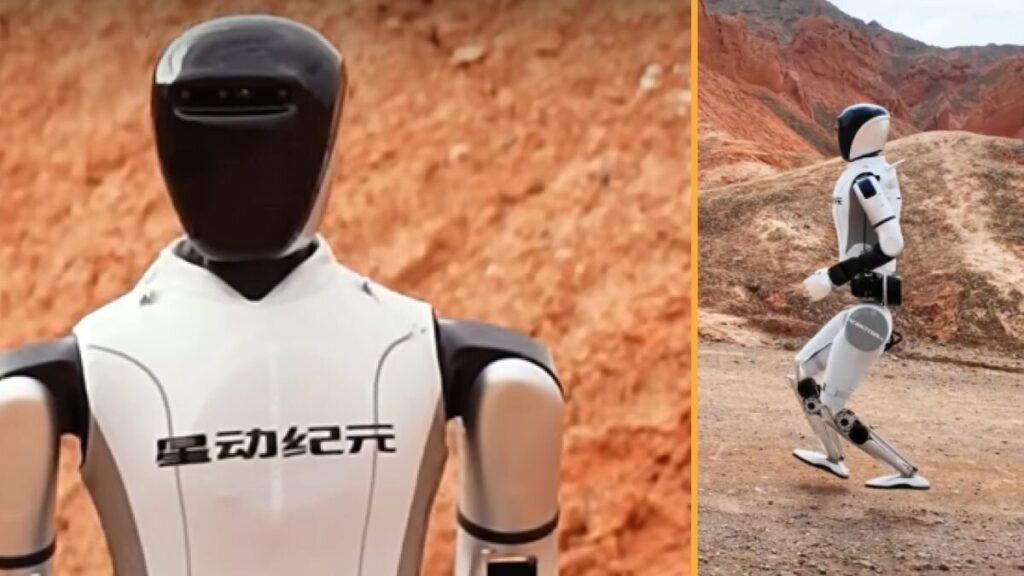In a groundbreaking development, Chinese tech company Robot Era has unveiled STAR1, a humanoid robot that has shattered previous speed records, demonstrating an impressive top speed of over 8 miles per hour (approximately 3.6 meters per second). This remarkable feat positions STAR1 as the fastest humanoid robot currently in existence. The robot’s record-breaking performance is attributed in part to an unusual assist—sneakers tailored to enhance its agility across diverse terrains.
Standing at 5 feet 7 inches tall and weighing 143 pounds, STAR1 exemplifies cutting-edge robotics engineering. The bipedal marvel, conceived in the research labs of Robot Era, made its public debut under challenging conditions. In a dramatic demonstration, two STAR1 units raced each other across the rugged landscapes of the Gobi Desert in northwestern China. The experiment sought to evaluate the impact of athletic footwear on the robot’s performance, with one of the units donning sneakers aimed at improving its speed.
Equipped with high-torque motors and sophisticated artificial intelligence algorithms, the sneaker-clad STAR1 adeptly navigated various terrains, including grass, gravel, and more conventional paved surfaces. Impressively, the robot was able to maintain its peak speed for an uninterrupted duration of 34 minutes, showcasing its endurance and stability.
In achieving speeds that outpace Unitree’s H1 robot, which previously held the world record at 7.4 mph (3.3 m/s), STAR1 has brought a new level of dynamism to bipedal robotics. While the aid of sneakers contributed to its performance, it’s important to note that H1 was not engaging in true running, as it did not achieve a phase where both feet were simultaneously airborne.
STAR1’s groundbreaking capabilities are powered by a computational powerhouse, boasting 275 trillion operations per second (TOPS). This level of processing power significantly outstrips that of standard consumer-grade laptops, which typically operate between 45 and 55 TOPS. Additionally, the robot is constructed with 12 degrees of freedom, allowing a remarkable range of motion and expressive maneuverability through its multiple joints.
As STAR1 continues to set new precedents in robotic mobility, its development heralds a new chapter in the unfolding story of humanoid robotics, where speed, agility, and intelligent design converge to redefine what machines can achieve alongside humanity’s technological capabilites.


